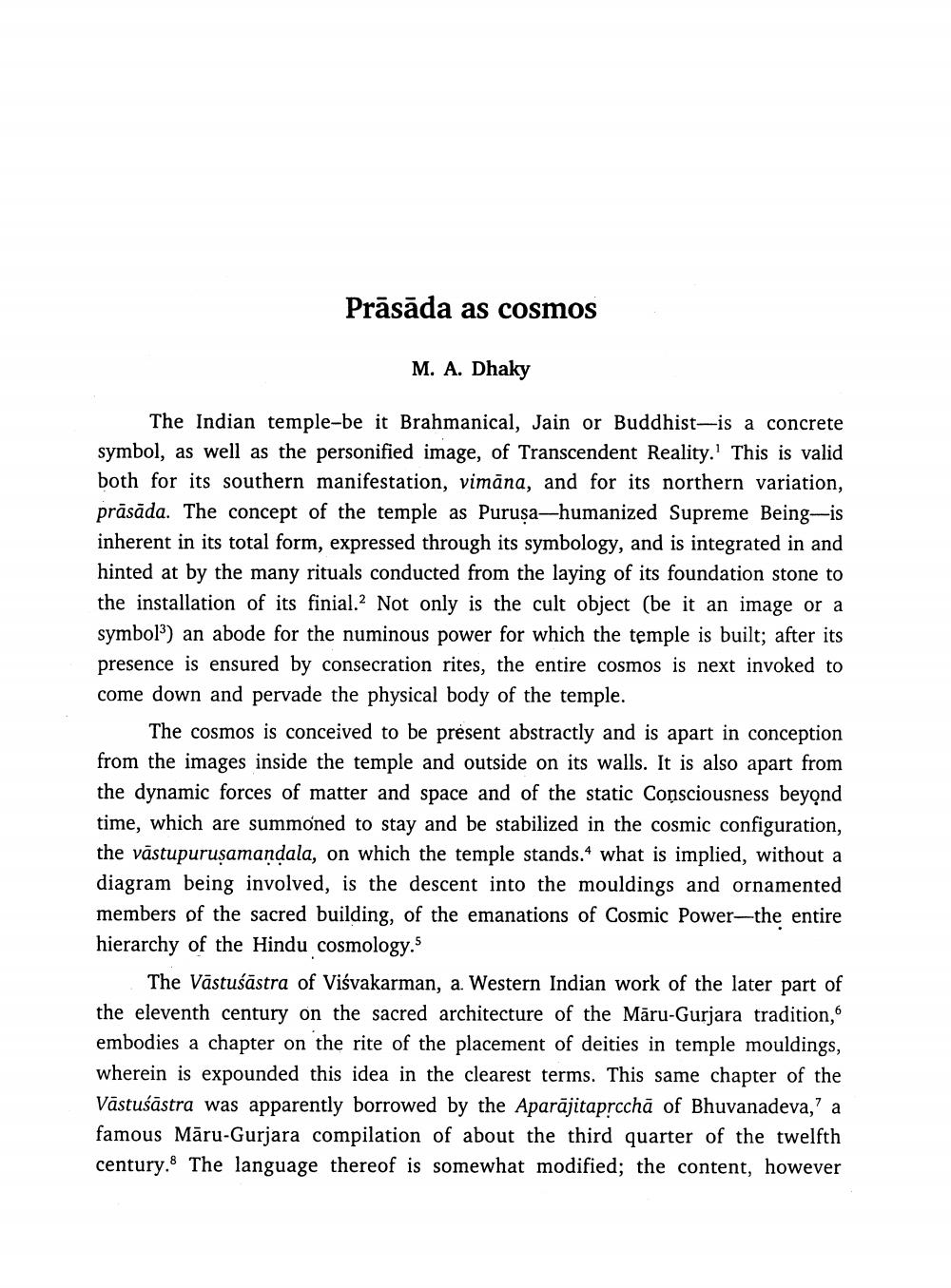________________
Prāsāda as cosmos
M. A. Dhaky
The Indian temple-be it Brahmanical, Jain or Buddhist-is a concrete symbol, as well as the personified image, of Transcendent Reality. This is valid both for its southern manifestation, vimāna, and for its northern variation, prāsāda. The concept of the temple as Purusa-humanized Supreme Being-is inherent in its total form, expressed through its symbology, and is integrated in and hinted at by the many rituals conducted from the laying of its foundation stone to the installation of its finial.2 Not only is the cult object (be it an image or a symbol) an abode for the numinous power for which the temple is built; after its presence is ensured by consecration rites, the entire cosmos is next invoked to come down and pervade the physical body of the temple.
The cosmos is conceived to be present abstractly and is apart in conception from the images inside the temple and outside on its walls. It is also apart from the dynamic forces of matter and space and of the static Consciousness beyond time, which are summoned to stay and be stabilized in the cosmic configuration, the västupuruṣamandala, on which the temple stands. what is implied, without a diagram being involved, is the descent into the mouldings and ornamented members of the sacred building, of the emanations of Cosmic Power—the entire hierarchy of the Hindu cosmology.5
The Västuśāstra of Viśvakarman, a Western Indian work of the later part of the eleventh century on the sacred architecture of the Māru-Gurjara tradition, embodies a chapter on the rite of the placement of deities in temple mouldings, wherein is expounded this idea in the clearest terms. This same chapter of the Vāstuśāstra was apparently borrowed by the Aparājitaprcchā of Bhuvanadeva, a famous Māru-Gurjara compilation of about the third quarter of the twelfth century. The language thereof is somewhat modified; the content, however




